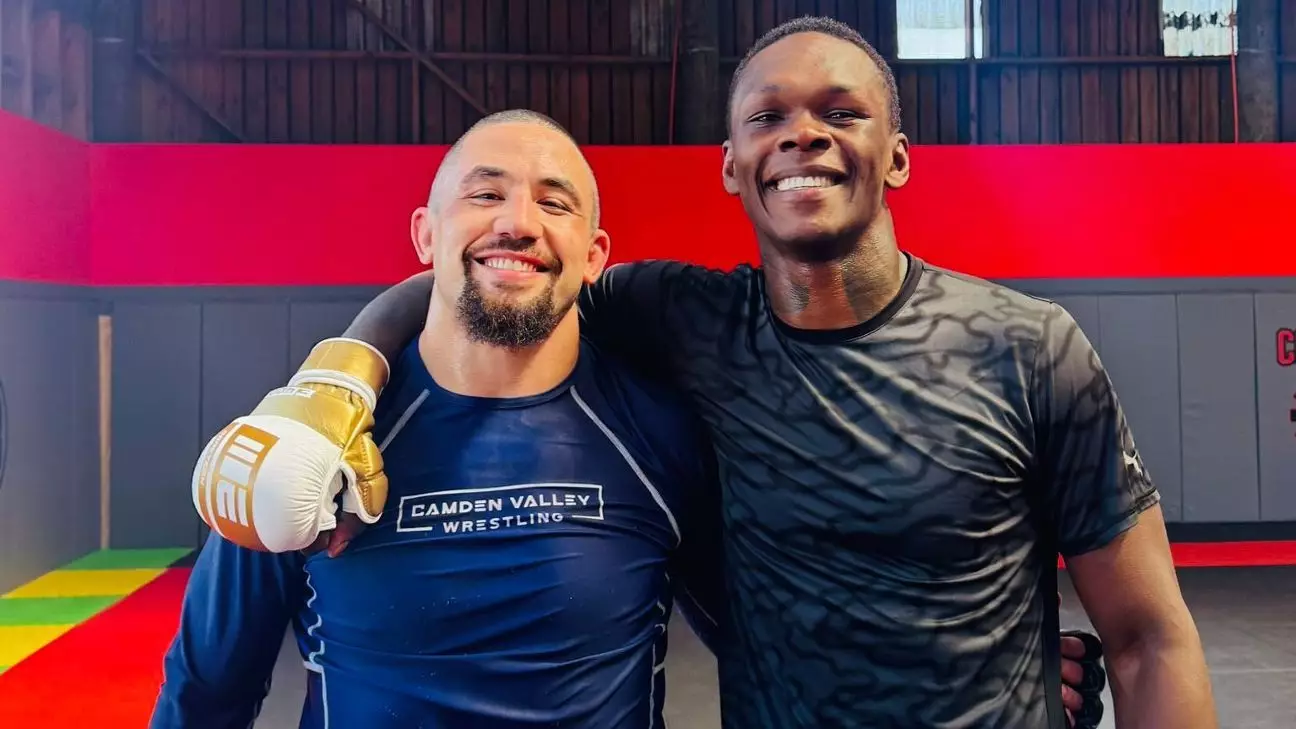In the fiercely competitive world of mixed martial arts (MMA), relationships can be complicated. Israel Adesanya, the former UFC Middleweight Champion, and Robert Whittaker, his long-time adversary, embody this complexity. In an unexpected twist of fate, the pair have transitioned from bitter rivals to training partners. This change reflects a broader narrative of sportsmanship and personal growth, which not only emphasizes the importance of collaboration but could also play a pivotal role in Adesanya’s quest for redemption after a string of disappointing performances.
Recently, social media buzzed with excitement when Adesanya shared an image on Instagram of himself training alongside Whittaker at City Kickboxing in Auckland. This was no standard training session; it was a moment laden with significance. It signaled a reconciliation of sorts and showcased the two fighters coming together, transcending their previous hostilities. Their shared history includes two memorable title bouts, with the first meeting drawing a record-breaking audience in Melbourne in 2019. Fast forward three years, and their relationship appears to have undergone a transformation that benefits both fighters.
Adesanya has been vocal about the advantages of having a fighter of Whittaker’s caliber in his corner. “Working with Rob was awesome,” he remarked, highlighting the energy and depth of experience Whittaker brought to the session. This collaborative approach underlines a crucial realization that fighters can achieve more together, leveraging their unique skill sets and experiences to prepare for upcoming challenges—Adesanya is set to face Nassourdine Imavov on February 1.
Training with an opponent who has shared similar struggles can be beneficial. Both fighters have openly discussed mental health challenges and the pressures of competing at an elite level. Adesanya, at 35, and Whittaker, at 34, find themselves at similar crossroads in their careers. Their shared understanding fosters camaraderie rather than rivalry, exemplifying how the sport can evolve beyond animosity into a constructive partnership.
The absence of tension during their training sessions stands in stark contrast to their prior interactions, which were often marked by heated exchanges. “There was no awkwardness whatsoever,” Adesanya commented, sharing a heartfelt perspective on their new dynamic. This ease suggests a maturity and self-awareness that may have developed through the rigors of their careers. Their relationship has evolved into a platonic bond, proving that time and shared experiences can mend fractures.
For Adesanya, this training partnership offers more than just physical preparation; it’s also an opportunity for emotional fortitude. The bond they share serves as a reminder that even in a sport that often emphasizes individual prowess, collaboration and solidarity are invaluable components of success. It’s a refreshing narrative in an arena often fraught with egos.
One significant aspect of Adesanya’s preparation leading up to the Imavov fight involves a recalibration of his training regimen. He and his coach Eugene Bareman have overhauled their approach, implementing more efficient training blocks to boost Adesanya’s stamina and overall performance. This adjustment follows a harrowing defeat to Dricus Du Plessis, which revealed vulnerabilities that Adesanya is determined to address.
The fighter’s candid acknowledgment of fatigue during the Du Plessis bout shows growth in his self-reflection. “The Dricus fight was the most active I’ve ever been in any fight when it comes to output,” he stated, emphasizing the lessons learned from that experience. Such honesty is essential in combat sports, where mental and physical thresholds are constantly tested.
The introduction of varied training strategies, including different blocks over four-week periods, plays a crucial role in preparing Adesanya’s body and mind for the intense demands of high-stakes matches. With an eye on avoiding previous pitfalls, his commitment to this revised training plan demonstrates a proactive approach to regaining his status in the middleweight division.
As Adesanya gears up for his fight against Imavov, the collaboration with Whittaker could signify a turning point in his career. By embracing the power of unity and friendship, he not only strengthens his physical capabilities but also embraces a more mature mindset. This new chapter for Adesanya serves as an inspiration for others in competitive fields, reminding us that personal growth often springs from collaboration rather than conflict.
In an age where social media often magnifies rivalries, Adesanya’s story of cooperation and development provides a refreshing perspective. It reaffirms the belief that in the face of adversity, shared experiences and relationships can lead to new heights—both personally and professionally. As he steps into the octagon, the impact of this training partnership could very well be the key to unlocking a resurgence in his MMA journey.


Leave a Reply